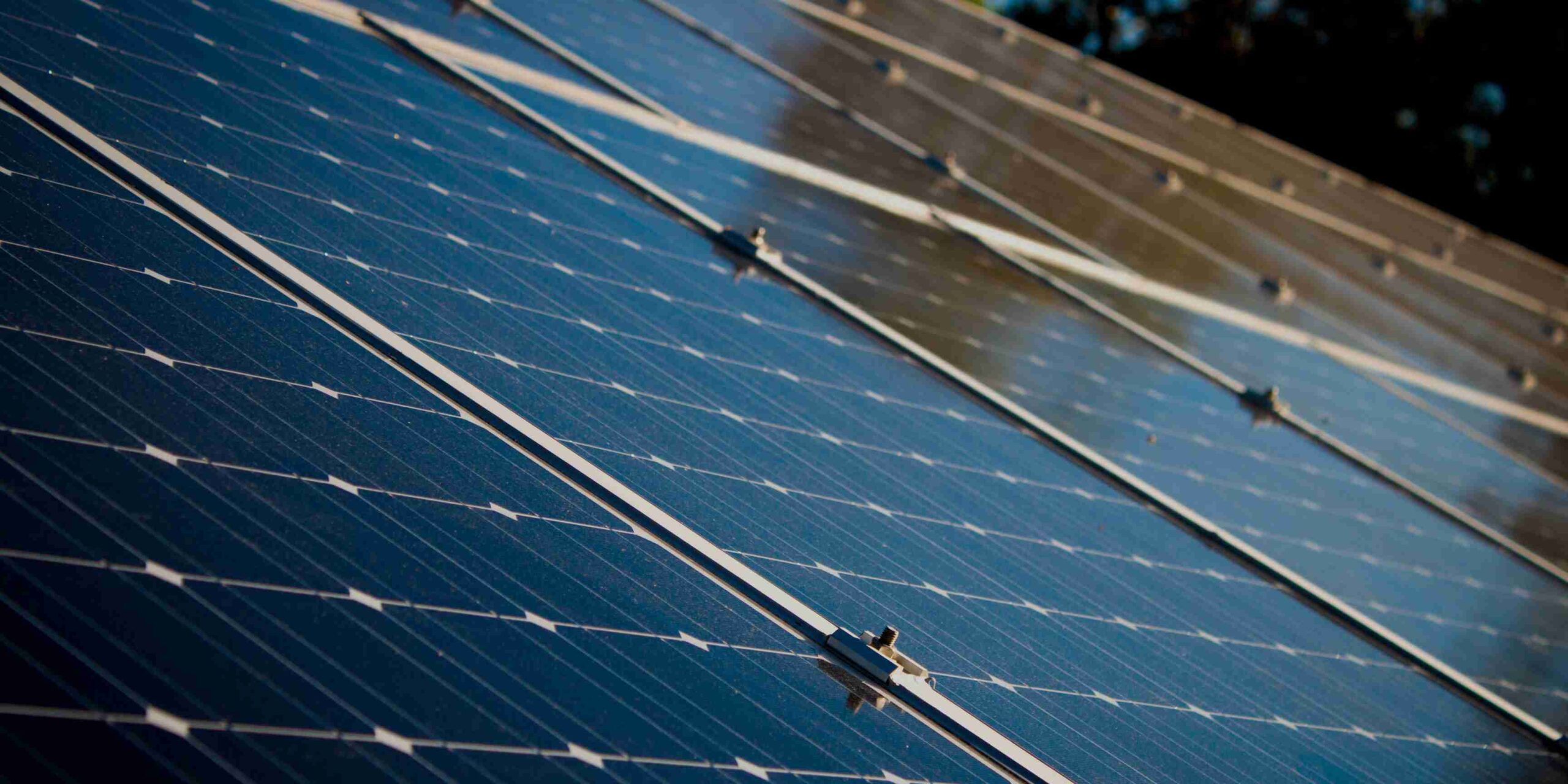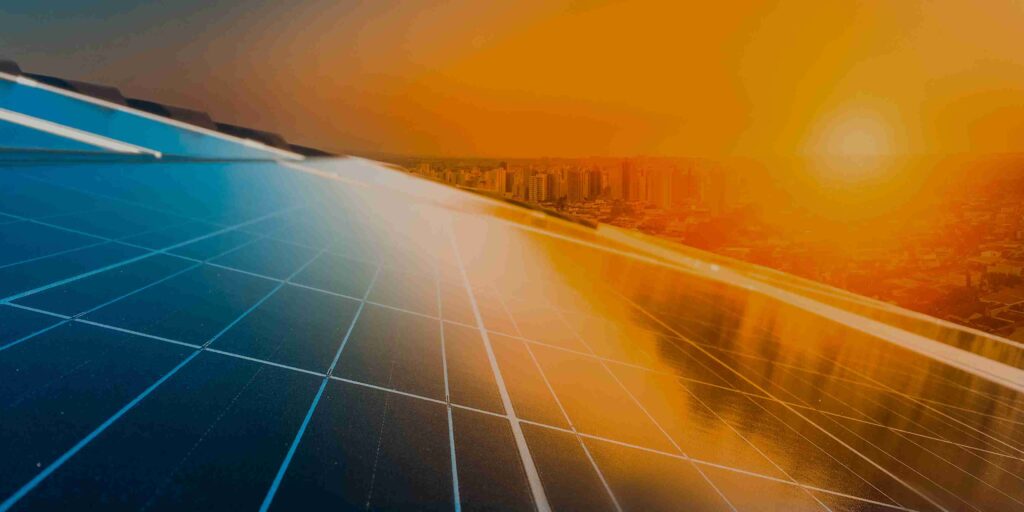
Which Type Of Solar Panel Is Best in Illinois 2023?
If you’re thinking of getting solar panels¹ and you’re looking into the different options available, you’ll no doubt at some point be wondering Which Type Of Solar Panel Is Best in Illinois 2023?
In this article, we’ll explain the differences between the three main types of solar panels and offer an overview of each, as well as some advantages and disadvantages, so that you have enough information to decide for yourself.

What Kinds Of Solar Panels Are There?
Which Type Of Solar Panel Is Best in Illinois 2023?
There are three main categories² that solar panels fall into, and each type has a lot of key differences, as well as different advantages and disadvantages.
The three categories of solar panels are:
- Monocrystalline solar panels
- Polycrystalline solar panels
- Thin film solar panels
Monocrystalline solar panels are a type of solar panel, or photovoltaic module, that is made up of solar cells that have been formed from a single silicon crystal.
The silicon crystal is melted down to form an ingot, which is then cooled and cut into wafers. The edges are cut, smoothed and rounded – a process that makes the solar cells more efficient at producing electricity.
The wafers are then treated to make them more electrically conductive, and other processes occur until eventually you have the solar cells that will then be arranged and secured to form a solar panel.
- What Are Polycrystalline Solar Panels?
Polycrystalline solar panels are made in a similar way to monocrystalline solar panels, with the main difference being that they are made from multiple silicon crystals.
The silicon crystals are melted down, and the molten silicon is poured into a mold to form the ingot, though the cooling process requires less care and attention than is necessary during the manufacture of monocrystalline solar cells.
The ingot is similarly cut into wafers, but the edges are not cut – which reduces manufacturing waste and contributes to the overall lower cost of polycrystalline panels. The wafers are treated in the same way, and then you have your polycrystalline solar cells.
- What Are Thin Film Solar Panels?
Thin film solar panels are a type of flexible solar panel. As the name suggests, they are thinner than other types of solar panel – 350 times thinner, in fact.
While thin film solar panels may sometimes contain silicon, unlike with monocrystalline and polycrystalline solar panels it is not the crystalline form of silicon.
Thin film solar panels are made up of layers of semiconducting materials that have been placed between transparent conducting layers, with a layer of glass placed on top. Which Type Of Solar Panel Is Best in Illinois 2023?

What Are The Key Differences Between Monocrystalline, Polycrystalline and Thin Film Solar Panels?
So, now you know a little about the different materials used in the manufacture of each type of solar panel, and the different manufacturing processes that take place, it’s time to look at the different specifications for each type of solar panel.
- What Are The Specs Of Monocrystalline Solar Panels?
- Solar Panel Efficiency³ Rating: On average, the efficiency rating of most commercially available monocrystalline solar panels is between 17 and 22%.
- Power Output: The power output of most monocrystalline solar panels on the market today usually ranges between 327 to 425 watts.
- Lifespan: The average lifespan of most monocrystalline solar panels available today is between 25 and 40 years.
- Cost: Monocrystalline solar panels are usually priced anywhere between $3.00 to $3.50 per watt, meaning that a 6kW system would cost around $19,000 before incentives.
- Temperature coefficient: -0.3 to -0.4%.
- What Are The Specs Of Polycrystalline Solar Panels?
- Solar Panel Efficiency Rating: The average efficiency rating of most commercially available polycrystalline solar panels is between 15 and 17%.
- Power Output: On average, most polycrystalline solar panels available on the market today have a power output somewhere between 240 and 300 watts.
- Lifespan: Polycrystalline solar cells have a higher degradation rate than monocrystalline cells, so the lifespan of polycrystalline solar panels is only between 20 and 35 years.
- Cost: Polycrystalline solar panels usually come with a price tag in the range of $2.80 to $3.00 per watt, so a 6kW system would cost around $17,400 before incentives.
- Temperature coefficient⁴: -0.45 to -0.5%.
- What Are The Specs Of Thin Film Solar Panels?
- Solar Panel Efficiency Rating: Thin film solar panels have the lowest efficiency rating⁵ of the three types, with efficiency typically ranging between 10 and 13%.
- Power Output: Due to the fact that they have a much lower efficiency, the power output of most commercially available thin film solar panels isn’t usually above 250 watts.
- Lifespan: Thin film solar panels have the shortest lifespan, with most lasting somewhere between 10 to 20 years.
- Cost: Thin film panels have an average price range of $2.00 to $3.00 per watt, so a 6kW system would cost roughly $17,000 before incentives.
- Temperature coefficient: -0.2%
Which Type Of Solar Panel Is Best in Illinois 2023?

What is the temperature coefficient?
During very hot weather, your solar panels lose some of their efficiency due to the heat friction slowing down electron movement within the panel.
The temperature coefficient⁶ is a scale which shows the rate at which the efficiency decreases – telling you how much the efficiency drops for every 1°C (1.8°F) the temperature of the panel rises over 25°C (77°F).
Which Type Of Solar Panel Is Best in Illinois 2023?
What Are The Advantages And Disadvantages Of Each Type Of Solar Panel?
Now that you know the specifications of each type of solar panel, we’re going to look at some of the advantages and disadvantages of each type of solar panel.
What Are The Advantages of Monocrystalline Solar Panels?
- Monocrystalline solar panels have the highest efficiency rating and power output, so you need fewer of them to meet your energy requirements – a plus if you have limited roof space.
- They have the longest lifespan of all three types of solar panel, so you can enjoy savings over a longer period before having to replace your system.
- They’re only slightly more expensive than polycrystalline solar panels – so weighted against the efficiency and power output, they’re the more cost-effective option.
What Are The Disadvantages of Monocrystalline Solar Panels?
- They’re the most expensive type of solar panel, so if you’re hoping to go solar but you’re on a tight budget then the difference in upfront costs could be significant.
- Installation costs, independent of the cost of the solar panels, are higher than the installation costs for thin film solar panels, due to the extra labor and materials.
- Sometimes drilling is required during rooftop installations, which may make them appear a less attractive option to homeowners who prefer to err on the side of caution.
What Are The Advantages of Polycrystalline Solar Panels?
- They’re only marginally more expensive than thin film solar panels, despite being significantly more efficient at producing electricity.
- They have a lifespan that is comparable to monocrystalline solar panels, and double that of thin film solar panels.
- The above points make them an attractive option for homeowners who want to go solar, but their budget for the upfront costs is limited.
What Are The Disadvantages of Polycrystalline Solar Panels?
- As with monocrystalline solar panels, installation costs are higher for polycrystalline solar panels due to increased labor and materials, when compared to thin film.
- Rooftop installations may require some drilling, depending on the type of roof that you have.
- The broken glass/marbled appearance of the panels causes them to be widely considered as the least aesthetically appealing option of the three choices.
What Are The Advantages of Thin Film Solar Panels?
- They’re very lightweight, so you don’t need to worry whether your roof can bear the weight of the panels.
- They are flexible solar panels, which makes them very versatile.
- Installation is very quick and easy, and requires no drilling into your roof.
Which Type Of Solar Panel Is Best in Illinois 2023?
What Are The Disadvantages of Thin Film Solar Panels?
- They’re the least efficient solar panels by a long way, so you need significantly more of them to meet your energy requirements and you may have insufficient roof space.
- They have by far the shortest lifespan, so you get a much shorter period of savings out of your investment.
- Owing to their much shorter lifespan and much lower power output, thin film solar panels are the least cost effective option in the long run.
Which Type Of Solar Panel Is Best in Illinois 2023?

Thinking Of Joining the Illinois Green Energy Revolution⁷?
Hopefully, if you’ve made it this far, the information contained within this article has been sufficient for you to make up your mind about which type of solar panel is best.
If you’re thinking of going solar and you’re overwhelmed by all the options, and the overall process, you’re not alone. That’s why Green Home Makeover is here to help.
We offer solar consultancy services, providing all the information and impartial advice that you need to make the right choices. We’ll also manage every stage of your solar project for you, so all you need to worry about is being home on the day of the installation.
If you’d like to know more about how we can help make your solar dream become a reality, contact us today for a free, no obligation consultation and quote.
Which Type Of Solar Panel Is Best in Illinois 2023?
Read our coming articles to to know more about: “Which Type Of Solar Panel Is Best in Illinois 2023? / What Types Of Solar Panels Are There in 2023 / Solar Panel Efficiency Rating² and Solar Power Output / Which Type Of Solar Panel Is Right For Your Home? / Top 10 Solar Panel FAQs in Illinois 2023″

References:
- https://www.energy.gov/energysaver/benefits-residential-solar-electricity
- https://www.forbes.com/home-improvement/solar/types-of-solar-panels/
- https://www.forbes.com/home-improvement/solar/most-efficient-solar-panels/
- https://www.researchgate.net/publication/322081958_Influence_of_Temperature_on_the_Performance_of_Photovoltaic_Polycrystalline_Silicon_Module_in_the_Bruneian_Climate
- https://www.sciencedirect.com/science/article/pii/S0925838822036933
- https://www.uia.no/en/research/disputations/solar-cells-and-temperature-coefficients
- https://www.forbes.com/home-improvement/solar/solar-panel-pricing-incentives-illinois/